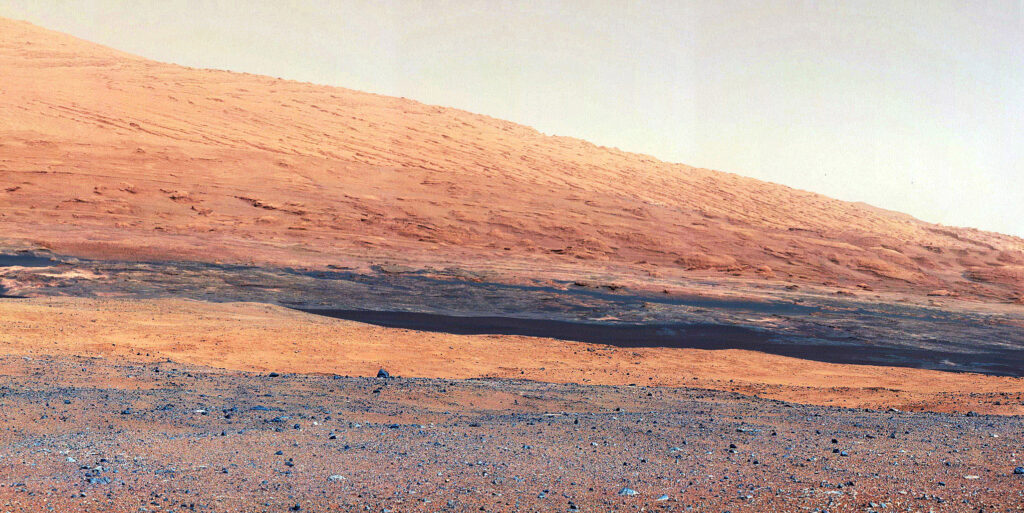The rover is preparing for a 1.6 km trip and NASA allows anyone to modify the Artificial Intelligence program that will manage the robot’s autonomous guidance
The Curiosity rover, one of the robots on the surface of Mars, is preparing for a new adventure. Curiosity landed on the red planet in August 2012 with a 3-year exploration and investigation program. To date, NASA engineers have managed to keep the rover active, tripling the original duration of the mission but they’re not satisfied. The next mission involves a trip of one and a half kilometers to Mount Sharp, a mountain of sulfur sediments 5 km high and located in the center of the Gale Crater. The place is very interesting because it could allow scientists to understand if and when conditions of humidity and temperature on Mars were suitable for the creation of life.
You might also be interested in —> DASS patents a method to exploit resources on Mars
Because of the distance between Mars and the Earth and the delay with which the data are received (about 20 minutes for a Earth-Mars-Earth communication), Curiosity can’t be driven in real time but needs a long series of preset commands. The procedure is suitable for movements of a few meters and has been used successfully until now. What happens if the rover has to travel a longer distance? Setting the route a priori is unlikely, as it is not possible to predict all the obstacles on the ground that can irreversibly damage the rover’s wheels, suspension or instruments. NASA has therefore changed its approach and decided to combine Artificial Intelligence with remote pilots.

The “ai4mars” project is the first open-source navigation-classification dataset of the Red Planet. In practice, NASA has made available the original code of the rover’s autonomous driving program and invites anyone who is experienced in programming to train rovers to understand Martian environments (all the information is available on zoonivers.org). The driving program is based on a machine learning algorithm, it adapts over time to the different adversities it faces. The algorithm must allow Curiosity to recognize obstacles and avoid them while minimizing risks. This innovative approach can revolutionize future exploration on extraterrestrial surfaces by allowing rovers to be sent to even more distant planets or moons in complete safety and autonomy.